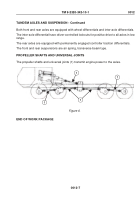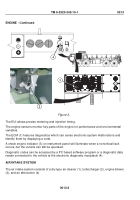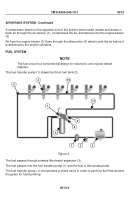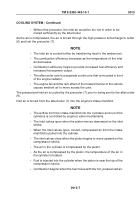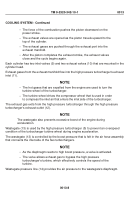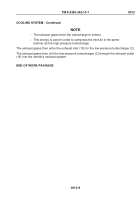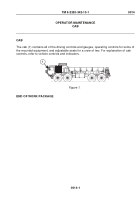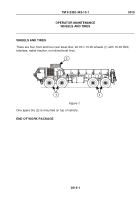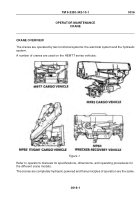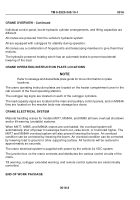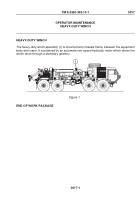TM-9-2320-342-10-1 - Page 198 of 1428
COOLING SYSTEM - Continued
•
The force of the combustion pushes the piston downward on the
power stroke.
•
The exhaust valves are opened as the piston travels upward to the
top of the cylinder.
•
The exhaust gases are pushed through the exhaust port into the
exhaust manifold.
•
After the piston completes the exhaust stroke, the exhaust valves
close and the cycle begins again.
Each cylinder has two inlet valves (9) and two exhaust valves (10) that are mounted in the
cylinder head.
Exhaust gases from the exhaust manifold flow into the high pressure turbocharger's exhaust
inlet (11).
NOTE
•
The hot gases that are expelled from the engine are used to turn the
turbine wheel of the turbocharger.
•
The turbine wheel drives the compressor wheel that is used in order
to compress the inlet air that enters the inlet side of the turbocharger.
The exhaust gas exits from the high pressure turbocharger through the high pressure
turbocharger's exhaust outlet (12).
NOTE
The wastegate also prevents excessive boost of the engine during
acceleration.
Wastegate (13) is used by the high pressure turbocharger (5) to prevent an overspeed
condition of the turbocharger turbine wheel during engine acceleration.
The wastegate (13) is controlled by the boost pressure that is felt in the air hose assembly
that connects the inlet side of the two turbochargers.
NOTE
•
As the diaphragm reacts to high boost pressure, a valve is activated.
•
The valve allows exhaust gas to bypass the high pressure
turbocharger's turbine, which effectively controls the speed of the
turbine.
Wastegate pressure line (14) provides the air pressure to the wastegate's diaphragm.
TM 9-2320-342-10-1
0013
0013-8
Back to Top


